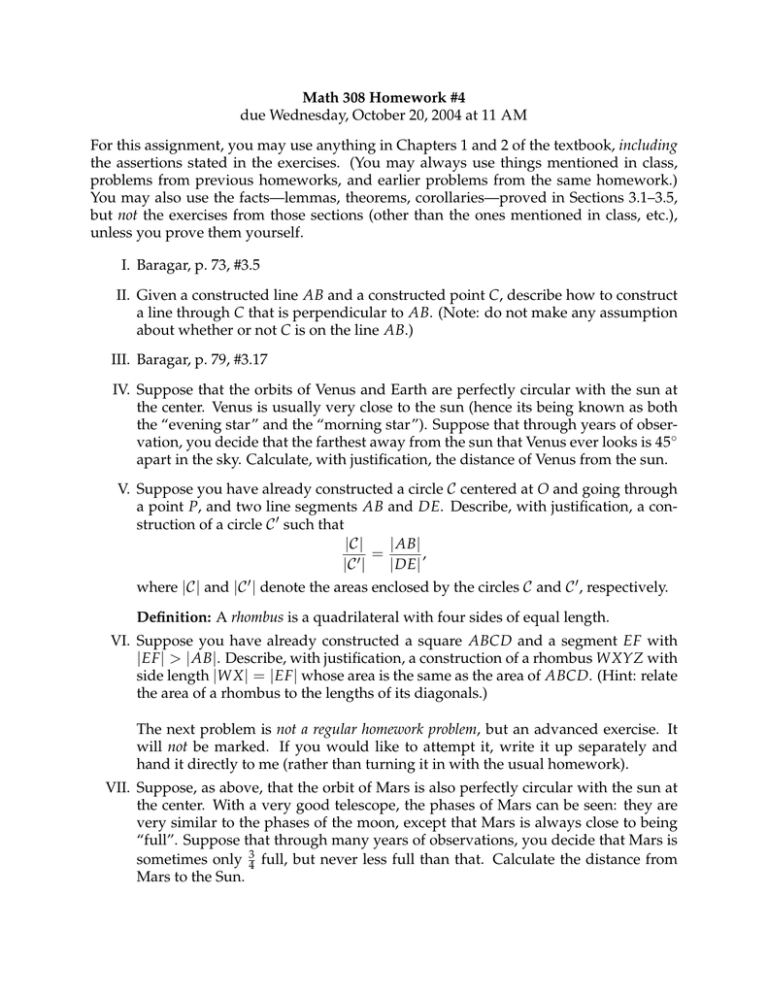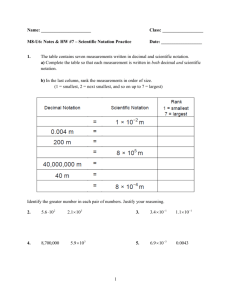Math 308 Homework #4
advertisement

Math 308 Homework #4 due Wednesday, October 20, 2004 at 11 AM For this assignment, you may use anything in Chapters 1 and 2 of the textbook, including the assertions stated in the exercises. (You may always use things mentioned in class, problems from previous homeworks, and earlier problems from the same homework.) You may also use the facts—lemmas, theorems, corollaries—proved in Sections 3.1–3.5, but not the exercises from those sections (other than the ones mentioned in class, etc.), unless you prove them yourself. I. Baragar, p. 73, #3.5 II. Given a constructed line AB and a constructed point C, describe how to construct a line through C that is perpendicular to AB. (Note: do not make any assumption about whether or not C is on the line AB.) III. Baragar, p. 79, #3.17 IV. Suppose that the orbits of Venus and Earth are perfectly circular with the sun at the center. Venus is usually very close to the sun (hence its being known as both the “evening star” and the “morning star”). Suppose that through years of observation, you decide that the farthest away from the sun that Venus ever looks is 45◦ apart in the sky. Calculate, with justification, the distance of Venus from the sun. V. Suppose you have already constructed a circle C centered at O and going through a point P, and two line segments AB and DE. Describe, with justification, a construction of a circle C 0 such that |C| | AB| = , 0 |C | | DE| where |C| and |C 0 | denote the areas enclosed by the circles C and C 0 , respectively. Definition: A rhombus is a quadrilateral with four sides of equal length. VI. Suppose you have already constructed a square ABCD and a segment EF with | EF | > | AB|. Describe, with justification, a construction of a rhombus WXYZ with side length |WX | = | EF | whose area is the same as the area of ABCD. (Hint: relate the area of a rhombus to the lengths of its diagonals.) The next problem is not a regular homework problem, but an advanced exercise. It will not be marked. If you would like to attempt it, write it up separately and hand it directly to me (rather than turning it in with the usual homework). VII. Suppose, as above, that the orbit of Mars is also perfectly circular with the sun at the center. With a very good telescope, the phases of Mars can be seen: they are very similar to the phases of the moon, except that Mars is always close to being “full”. Suppose that through many years of observations, you decide that Mars is sometimes only 43 full, but never less full than that. Calculate the distance from Mars to the Sun.



